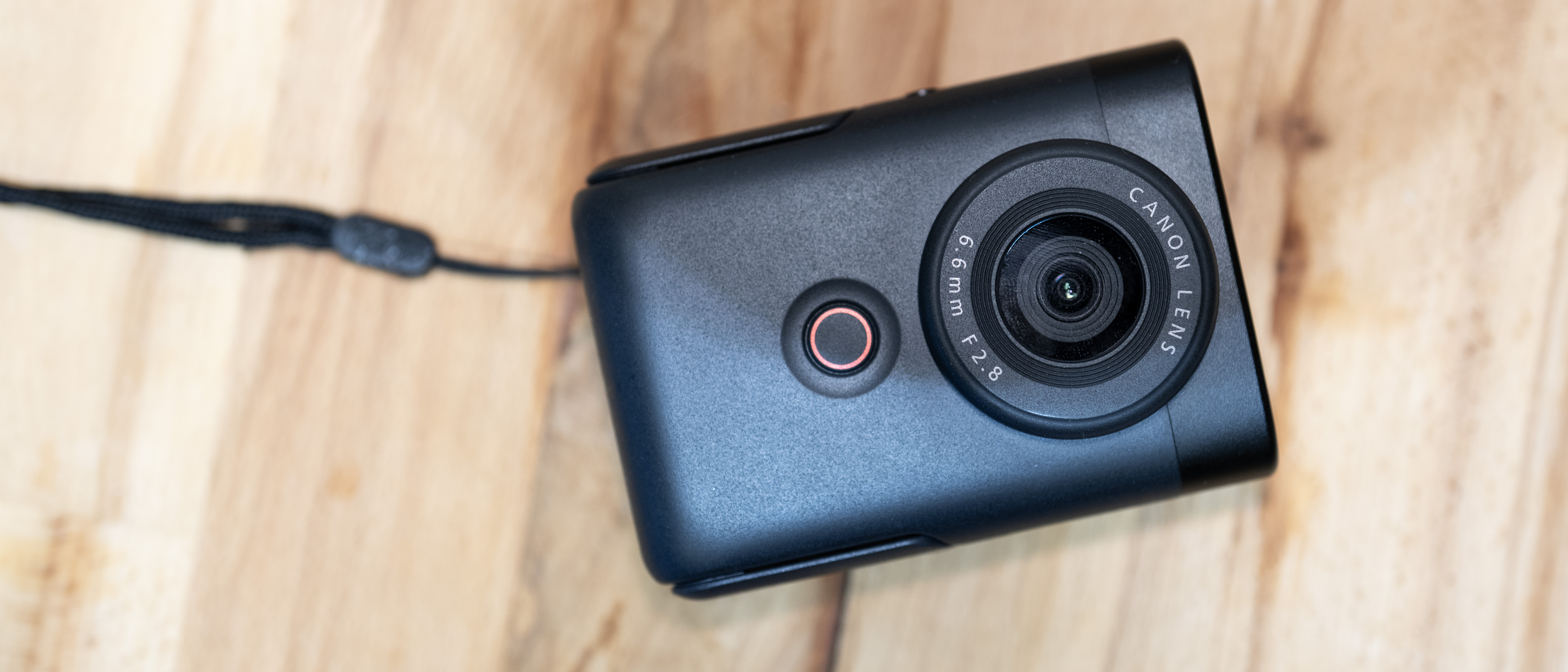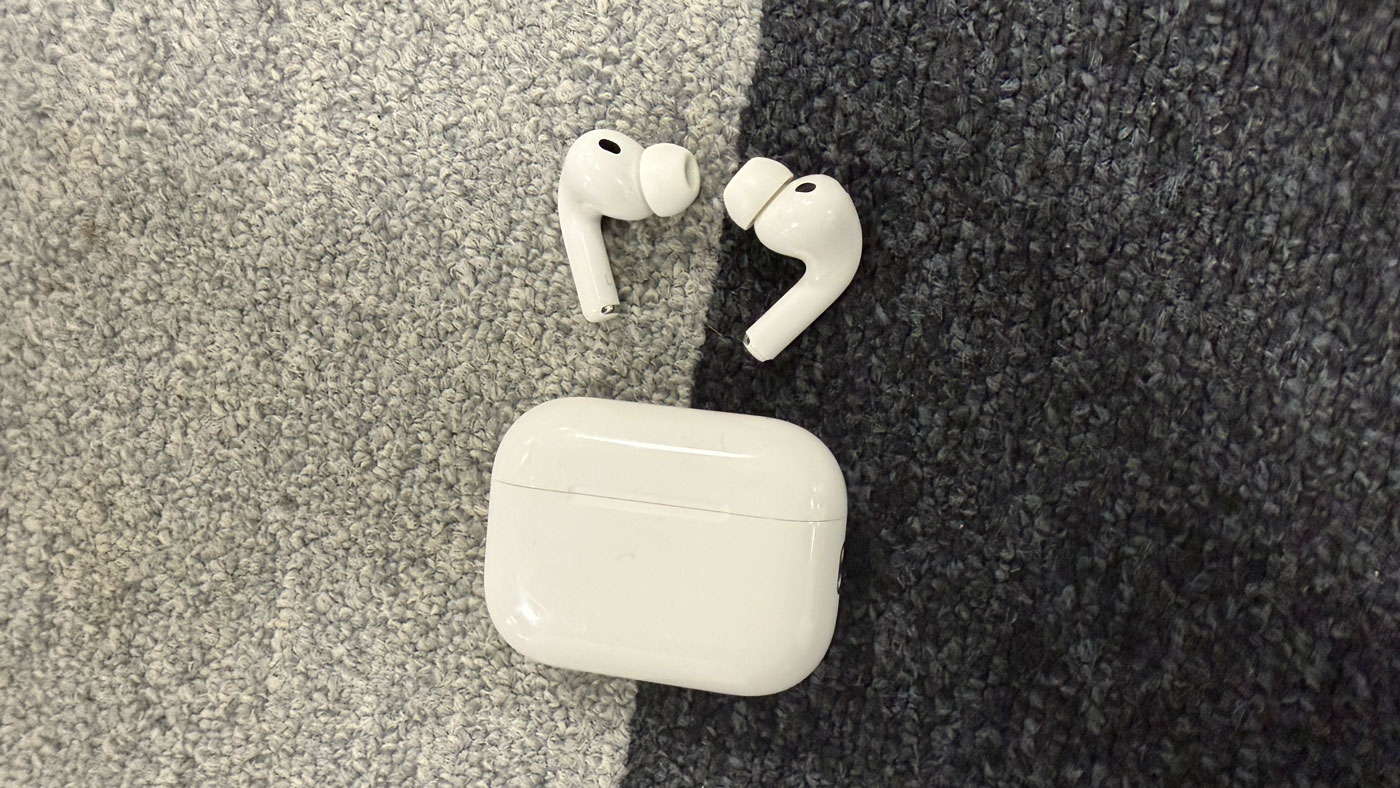Our Verdict
The Canon PowerShot V10 is a compact vlogging camera that has a lot to offer and comes with excellent subject tracking, but with some older technology on board, you might wonder whether it’s all that much better than a smartphone.
For
- Fully automated
- Good AF
- Compact
Against
- Older technology
- No weather sealing
- Slow cards
Why you can trust Creative Bloq
The Canon PowerShot V10 is an odd-looking camera but also an actually kind of brilliant one. It films landscape video from what appears to be a portrait orientation, has a built-in stand and a flippy touchscreen, and makes shooting video content quick and easy. It’s also tiny, surprisingly heavy, and feels in need of an upgrade even as it’s released.
We’ve seen vlogging cameras before, such as the Sony ZV-E10 or Canon PowerShot G9 X Mark II, but none of them have looked quite like this. The Powershot V10 takes its cues more from the action camera end of the market (though there's no easy mount clip for you to attach it to your canoe, and it’s not weather sealed) yet is bigger than a GoPro. It looks like a compact camera with the built-in flash lopped off, yet comes with a suite of video-centric features ideal for one-handed, one-person, operation.
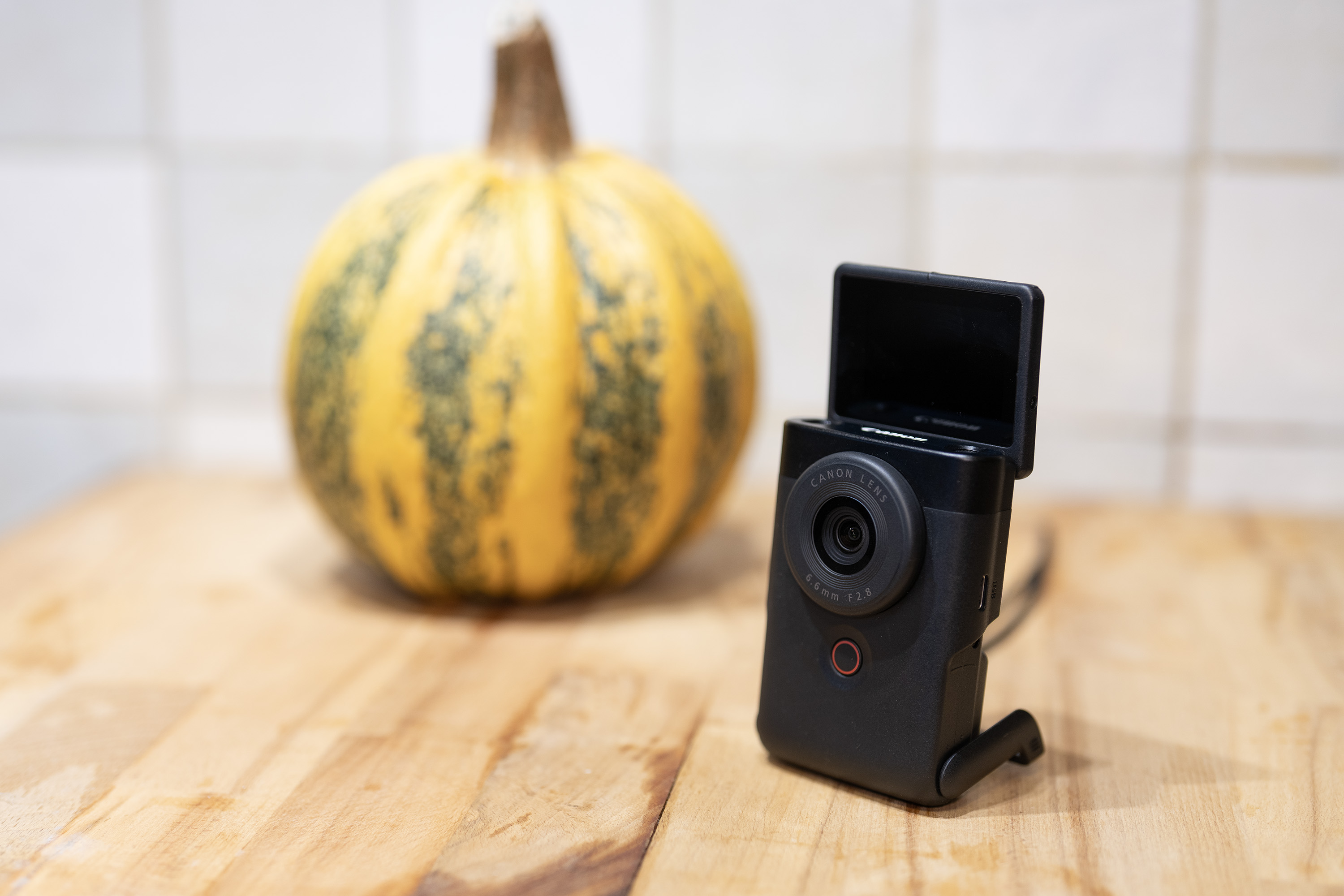
Canon PowerShot V10 review: Key specs
| Lens: | 6.6 mm, f/2.8, built-in three-stop ND filter |
| Censor: | One-inch 20.9MP BSI CMOS |
| Processor: | Digic X |
| Storage: | MicroSD |
| Screen: | Two-inch, 460,000 dots, 3:2 touchscreen |
| Microphones: | 48 Khz, 16-bit x 2 channels |
| Formats: | 8bit MP4, 8bit JPEG |
| Connectivity: | USB-C (USB 2.0 speed), WI-Fi 4 (2.4GHz), Bluetooth 4.2, HDMI Type-D (output only), 3.5mm stereo mic jack |
Canon PowerShot V10 review: Design and build
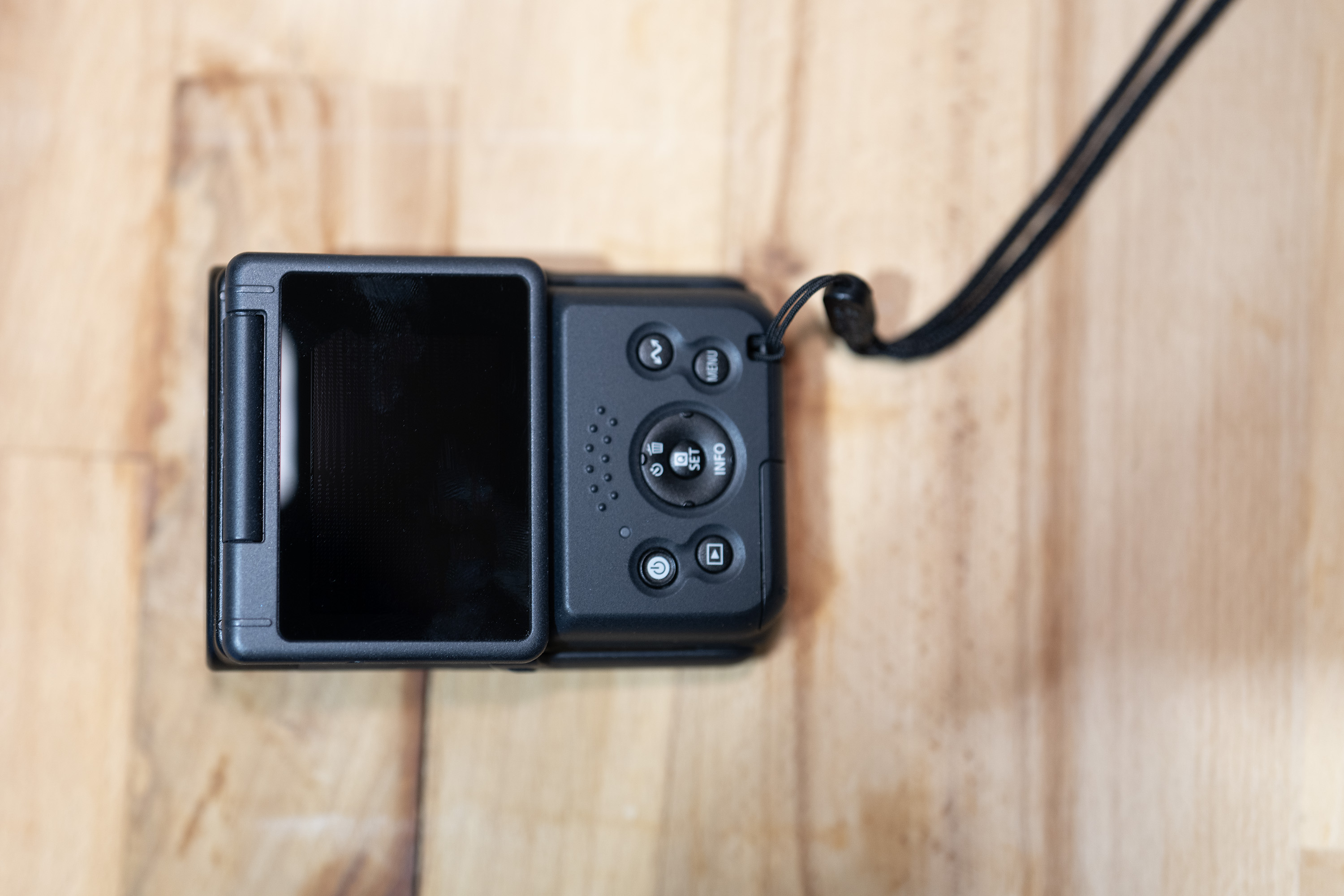
Folded up, the Powershot V10 looks like the smallest compact camera. Even with the screen and stand deployed it’s hardly any bigger, and once you remove the rubber lenscap it’s ready for action. Around the sides, you’ll find a USB-C port, Micro-HDMI, 3.5mm microphone input, and a Micro SD card slot tucked under its own little flap on the bottom. On the top are the built-in mics, a rather lovely star pattern visible beneath the grille, and a rubber lens cap made by Smallrig that fits neatly over the lens, which protrudes a short distance.
The case, which feels very well made, is chunky black plastic with edges and corners so well rounded that you’re never going to catch a sharp bit in your palm - though you’ll definitely notice it’s there as at 210g it has a bit of heft. A tiny two-inch touchscreen sits on a simple hinge that can flip up to be viewed from the front of the camera - there's no side-to-side movement or tilting. The camera is designed to be set up, stood up (or tripod mounted, there's a standard screw, and this is your best bet for getting it perfectly upright) and activated from the front, as there's a large Record button under the lens, the only control on that side of the camera.
Canon PowerShot V10 review: Features and performance
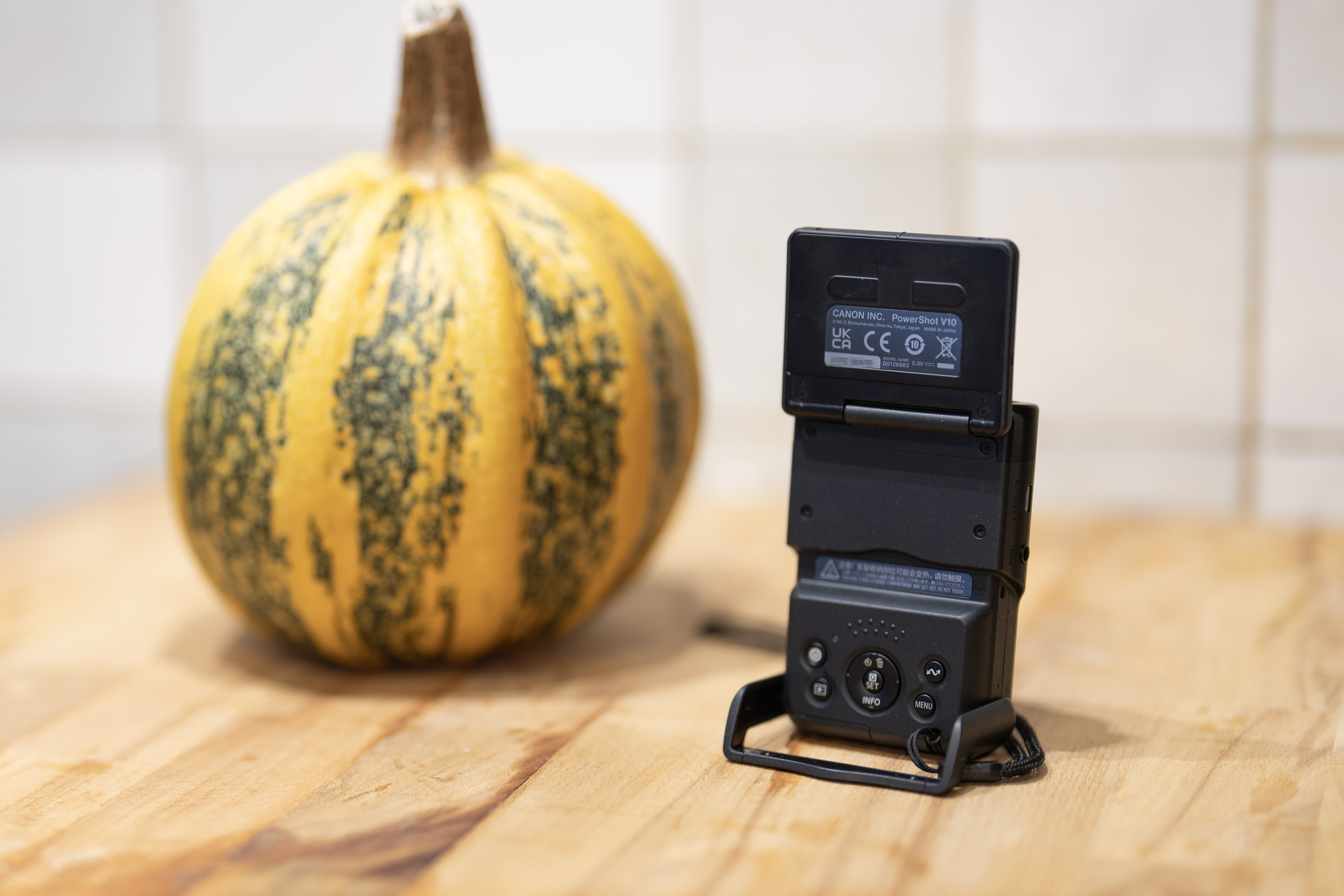
The fixed 6.6mm f/2.8 lens gives an ultra-wide angle of view that’s equivalent to 18mm on a full-frame camera, though this becomes 19mm when shooting video due to a slight crop. Either way, it’s an ideal angle for vlogging, as it allows you to appear in your own videos without having to stand too far away. Autofocus has continuous face tracking, and there are recording options for skin smoothing, manual exposure and image stabilisation that you can switch between on the touchscreen, as well as ‘normal’ auto mode, and you can record in 4K/30, 1080p/60, and selectable lower framerates and bitrates too.
The camera can be put in a (JPEG only) stills mode if you want to use all the 20MP of the sensor, and there's a useful self-timer for selfies. The sensor itself, however, is inherited from the Canon PowerShot G7 X III, and is a one-inch backside illuminated CMOS unit that gets the job done but is four years old. It would have been nice to have seen a more modern sensor, and likewise, the card slot could have done with accepting something faster than Micro SD (though we realise it was chosen for reasons of space). You’ll need a very fast card to accept the full 4K bitrate, and indeed you’re given an on-screen warning about this when you put the camera into that recording mode. The USB-C port can only manage USB 2.0 speeds, so you’ll want a faster card reader to go with the camera unless you’ve got lots of time on your hands, and there are older standards of Wi-Fi and Bluetooth on board to communicate with a smartphone app, Canon’s cloud service, or your PC.
Still, it’s a bigger sensor than that found in smartphones, and the image quality is actually pretty good thanks to the sharp lens and Canon’s excellent, sticky, autofocus. Distortion from the ultrawide lens is removed automatically in JPEG processing, and the auto and digital image stabilisation movie modes provide wel-exposed footage – there's even a built-in ND filter if you’re struggling with extremely bright scenes. You might not need it, however, as despite a slight tendency to clip highlights, the V10 produces its best work when fed sufficient light, and noise creeps in as you move up the ISO settings. There's no HDR recording either.
Daily design news, reviews, how-tos and more, as picked by the editors.
Another frustration comes from the stand, which must be closed before you swing the screen back into its resting position. No matter how many times we tried it, we always closed the screen first, which necessitated opening it again to snap the stand away. It also gets hot in the stand recess – a warning is printed on the case – and camera shutdown due to overheating can occur after only half of its rated 55-minute 4K recording time, which is limited by the battery. There's no 4GB file limit, as long as you format the card as EXFAT.
Canon PowerShot V10 review: Price
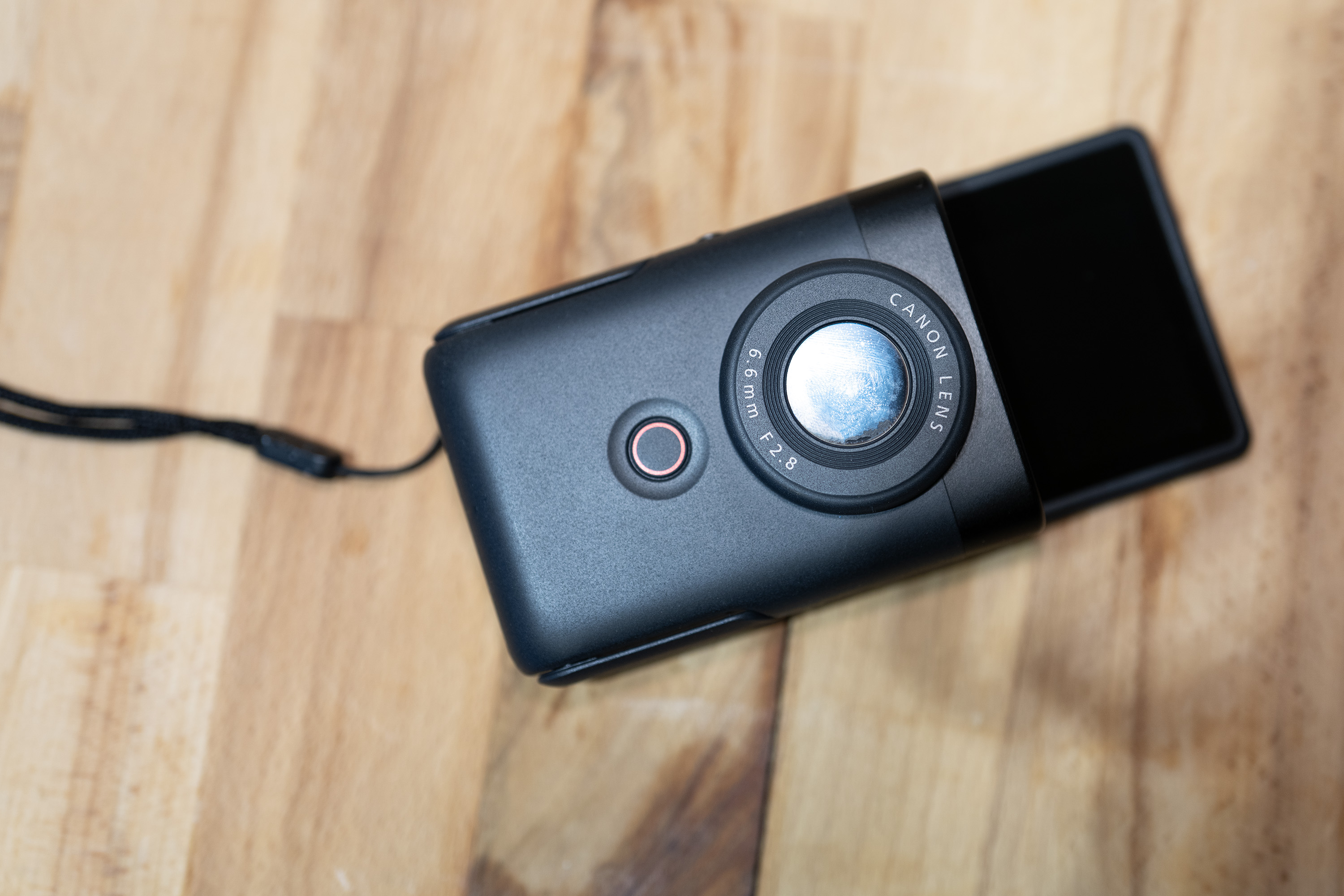
The going rate, at the time of writing, for the Canon PowerShot V10 is £459/$429, but like for many Canon products, do look out for occasional discounts, especially around events like Prime Day and Black Friday.
Should I buy the Canon PowerShot V10?

The Powershot V10 is capable of producing usable video when left to its own devices, with pictures and sound from the built-in lens and mics perfectly decent. The ability to fiddle with manual settings is there, but this isn’t a camera for the cinephile, but rather one for capturing quick bursts of action or single-camera presentations that can be shared to social media or YouTube. While you may be able to get similar results from one of the best camera phones, the V10’s strength comes from its autofocus, which locks on to faces, and the simplicity with which it can be deployed – no extra equipment is necessary, apart from maybe a wind baffle if you’re outside.
out of 10
The Canon PowerShot V10 is a compact vlogging camera that has a lot to offer and comes with excellent subject tracking, but with some older technology on board, you might wonder whether it’s all that much better than a smartphone.

Ian Evenden has been a journalist for over 20 years, starting in the days of QuarkXpress 4 and Photoshop 5. He now mainly works in Creative Cloud and Google Docs, but can always find a use for a powerful laptop or two. When not sweating over page layout or photo editing, you can find him peering at the stars or growing vegetables.
